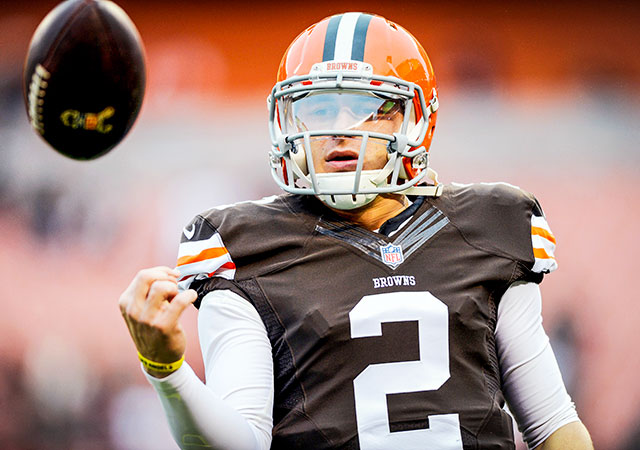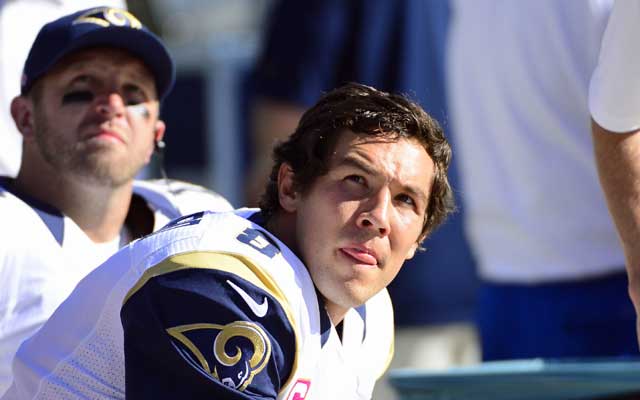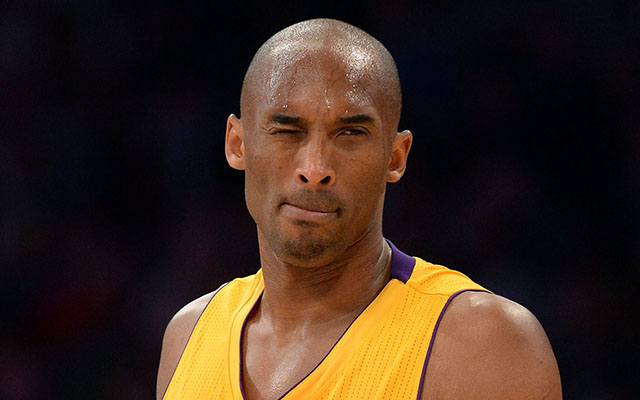BOSTON – Shane Larkin is still learning how to play in the NBA, but if there’s one thing he can already do at an elite level, it’s get steals.
Tony Allen, John Wall, Mario Chalmers and Elfrid Payton are the only guards who’ve played as much as Larkin this season and stolen the ball on a higher percentage of opponents’ possessions when on the court.
I ask Larkin the key to getting so getting so many steals.
“Fast and short,” interjects Knicks rookie Cleanthony Early, one locker over.
After playfully chiding Early for interrupting the interview, Larkin insists the simple assessment is inaccurate.
“It’s more than that, because there’s a lot of short, fast guys who don’t get steals,” said Larkin, 22, the Knicks’ youngest player. “It’s anticipation, seeing things happening before they happen.”
Larkin sure does that.
In the last six months, Larkin has been traded and had the third-year team option on his rookie contract declined, sending his career into a bit of chaos.
Overwhelming? Nah. Larkin saw it all coming.
The Mavericks acquired Larkin, the No. 18 pick in 2013, in a draft-night trade. An injury-riddled rookie year put him on the outside looking in at Dallas’ rotation this season. He understood the Mavericks were trying to win now around Dirk Nowitzki – “Dirk deserves that,” Larkin said – and predicted a trade. Dallas dealt him to the Knicks in June.
In New York, he realized the Knicks were trying to maximize 2015 cap space. So, he also understood why they called him into an office just before the season to tell him they were declining his option for the 2015-16 season.
Now, Larkin will become an unrestricted free agent this summer – a rare predicament/opportunity for a player with his résumé and a crucial moment for the Knicks, who’ve long struggled to develop and keep young talent.
Larkin’s production – 5.4 points, 2.3 assists, 1.8 rebounds and 1.2 steals in 23.0 minutes per game – is modest, but he’s beginning to make good on the potential he showed before the draft. The 5-foot-11 point guard jumped 44 inches at the combine, the fifth-best mark in the DraftExpress database. He also had the fastest sprint time among players drafted in his class.
No doubt, Larkin, who turned pro following his sophomore season at Miami and is the son of baseball Hall of Famer Barry Larkin, has talent. His upside makes New York’s decision to decline his option all the more suspect.
The Knicks’ motivations are clear. They want to pursue big-time free agents next summer, pitching Carmelo Anthony’s star power, Phil Jackson’s winning pedigree and New York’s market share. By declining Larkin’s option and presumably renouncing him, they’ll gain $1,150,227 in cap room. If they renounce all their free agents, they could create more than $22 million in cap space.
Depending where the salary cap actually lands, declining Larkin’s option could make the difference between New York being able to offer someone a max contract. If that proves to be the case and the Knicks land a big free agent, the move will be a huge success.
But it’s risky to cast aside a promising young player on a cheap contract just for the chance of signing a star, especially when dropping the young player isn’t even guaranteed to increase the odds of nabbing the star. What if the Knicks would have had enough cap room to sign their top target with Larking remaining on the roster?
It’s not as if the Knicks can afford to keep throwing away young talent. That’s what got them into their current mess.
Make no mistake: Larkin is hardly an elite prospect. But he’s a former top-20 pick under the age of 24, a combination that shows his potential. Sure, there are 68 such players in the league, making the distinction far from unique. But Larkin is the Knicks’ only one.

The Pacers are the only other team outside playoff position with so few top-20 picks under age 24. Of course, the Pacers probably would be in playoff position if Paul George hadn’t gotten hurt.
What’s the Knicks’ excuse?
Not only are they bad (5-21), they’re choosing to let one of their better young players hit unrestricted free agency. Again, it’s not necessarily the wrong move – New York attracts free agents like few franchises – but it’s certainly intriguing.
Only one other player in the 2013 draft class had his third-year option declined – No. 30 pick Nemanja Nedovic, whom the Warriors outright waived because he couldn’t get on the court. In the last three years just five other first-round picks had their third-year options declined: Fab Melo, Kendall Marshall, Royce White, Jared Cunningham and JaJuan Johnson. Larkin has been much more productive than that group, save Marshall, whom the Wizards waived before he popped up with the Lakers for a surprisingly strong sophomore season.

Larkin still has the rest of this season to build on his total, and if he continues to progress – his 0.5 win shares are up from –0.1 last season – he could pass Marshall. He could also earn himself a raise first-round picks typically can’t get.
Larkin said he wants to re-sign with the Knicks, and they left that door open when informing him they were declining his option.
“I love it here. I want to be here,” Larkin said. “Obviously, I want to help bring the Knicks back to what they used to be.”
But the Knicks can offer Larkin only up to the $1,675,320 he would have earned on his rookie-scale contract. Any other team can pay more.
Will any?
He’s at least trending in the right direction.
Larkin broke his ankle just before what would have been his first summer league, and he didn’t make his NBA debut until the season was a few weeks underway. He never found his footing in Dallas, struggling between D-League stints.
“He basically didn’t have a rookie season,” Knicks coach Derek Fisher said.
Larkin doesn’t find that assessment far off.
“It was definitely the most frustrating time of my life,” Larkin said.
The Knicks offered him a second chance, and when Jose Calderon got hurt, a starting spot. Larkin started 12 of New York’s first 13 games, gaining valuable experience.
“This is like a redshirt rookie year,” Larkin said.
So far, one of Larkin’s biggest areas of improvement is 3-point shooting. He has made 13-of-35 shots from beyond the arc (42.9 percent), up from 12-of-38 (31.6) last season. Perhaps that’s due just to a small sample, but Larkin said he feels much more comfortable on those long-distance shots.
Of all the tough transitions Larkin made from Miami to the NBA, 3-point shooting wasn’t one he expected. He often shot from NBA range in college, but at this level, they defend that distance. Plus, gone were the easier closer 3s.
“In college, you can kind of shoot the 3 without setting your feet, without doing the right technique every time, because it’s not that far,” Larkin said. “But you get up here, and you realize that those damn near-two extra feet just make it that much harder of a shot.”
With so many talented point guards, it’s hard to carve out a niche without more of an all-around game, and maybe Larkin will develop one. Sometimes, it takes players a little while to adjust to the NBA.
Larkin doesn’t have the luxury of time, though. He’ll hit free agency twice as quickly as most of his draft-mates, unrestricted free agency four times as quickly as some of them.
But for a team looking for a backup, his skill set could work. If Larkin maintains his improved 3-point shooting, he makes a case as a feisty 3-and-D player. After all, those steals can be quite valuable.
After talking up the importance of reading plays to get steals, Larkin added one other key factor.
“You’ve just got to go out there and play hard,” Larkin said. “That’s the first thing. You’ve just got to go play hard as hell. It works out like that sometimes.”











 Robert Griffin III somehow missed all five open receivers vs. Tampa Bay.
Robert Griffin III somehow missed all five open receivers vs. Tampa Bay. 









